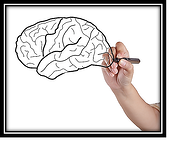 Sensory inputs (something “real”) lead the brain to new connections—but so do thoughts (something “unreal”)! Mentally practicing a task produces the same physical changes in the brain as physically practicing it.
Sensory inputs (something “real”) lead the brain to new connections—but so do thoughts (something “unreal”)! Mentally practicing a task produces the same physical changes in the brain as physically practicing it.
- Schlomo Breznitz and Collins Hemingway, Maximum Brainpower
Throughout these tips emails, you’ve seen a great deal of training advice. Reading and understanding the advice is one thing, but practicing all of it so you can put it to real use at work is another.
One common issue with learning new skills is finding a safe place to practice them. You don’t want to potentially jeopardize your relationship with a customer by trying out a brand new skill on him/her for the first time unless you’re sure he/she will be receptive.
So what does this mean for you? It means that visualizing yourself practicing something can be valuable to you in a similar way as actually practicing it. Athletes and artists (really, anyone in performance-based careers) have known for a long time that visualization can improve performance, but a lot of the focus was on how visualization could reduce stress. Now, neuroscience is giving us another benefit: mentally practicing a task actually builds connections in the brain in a way similar to physically producing the task.
While this certainly does not mean you should completely avoid physically practicing a skill before you roll it out, it does mean that you have more ways to go about your learning, hopefully making it easier to incorporate your professional development into your schedule and tasks.

